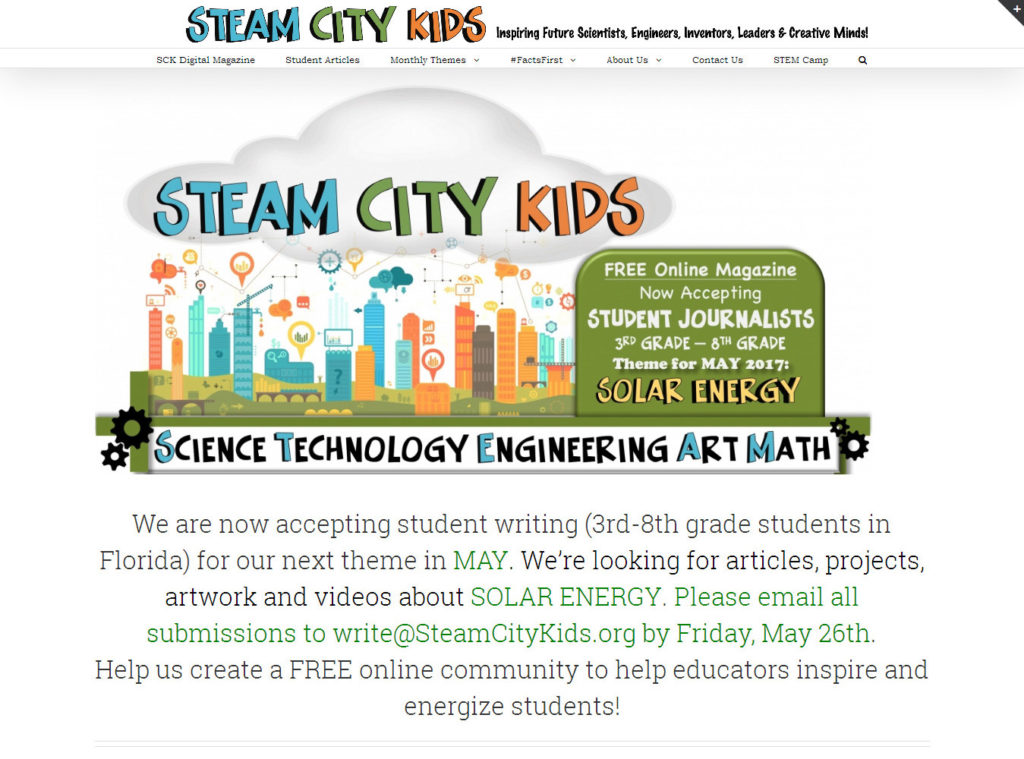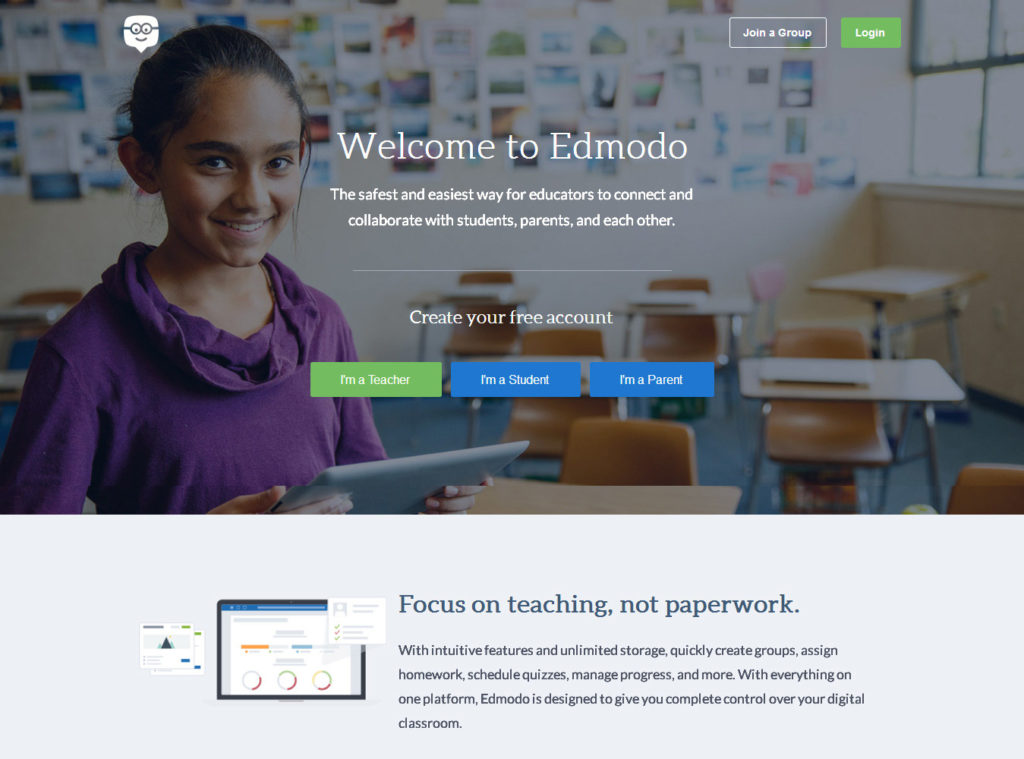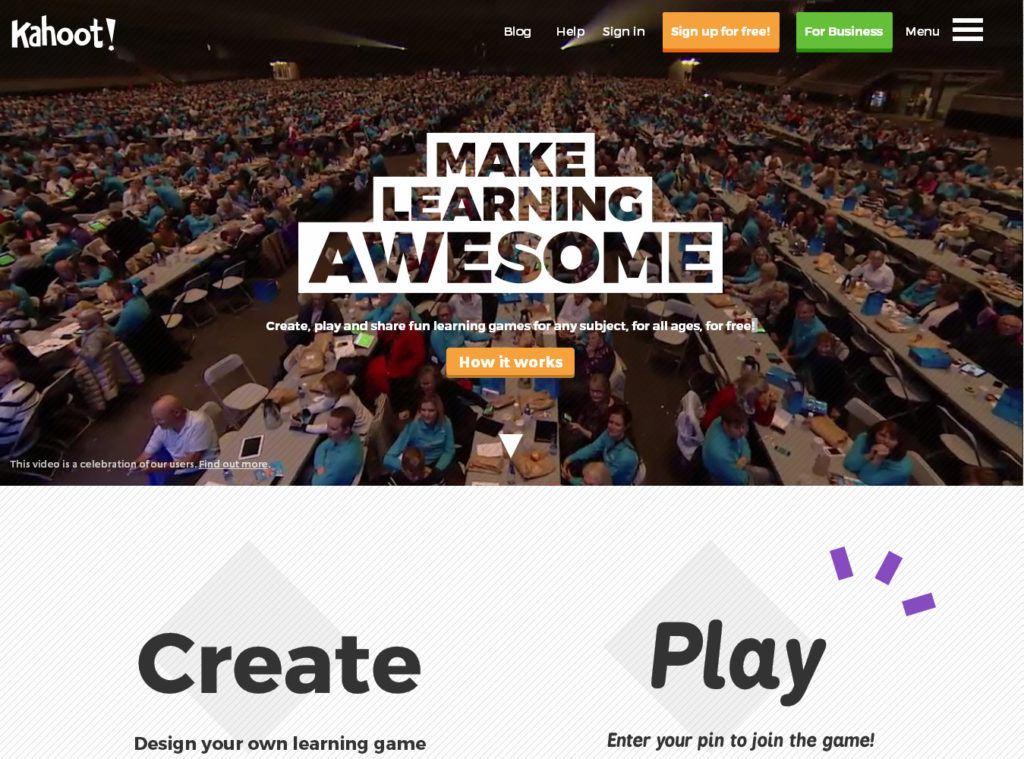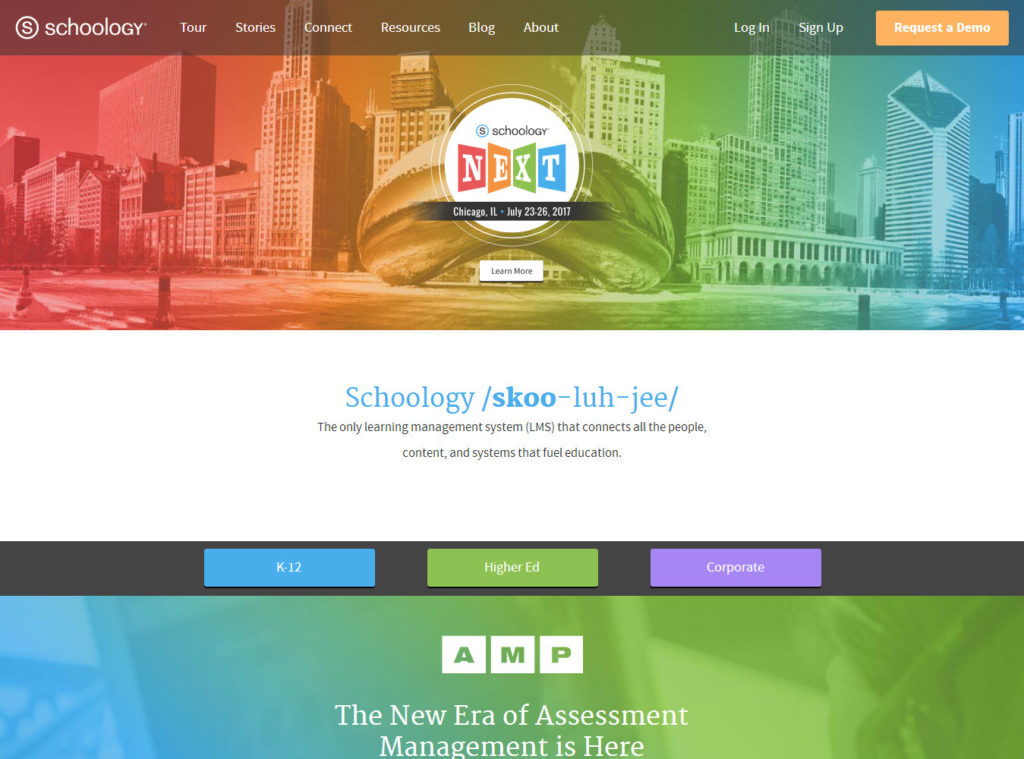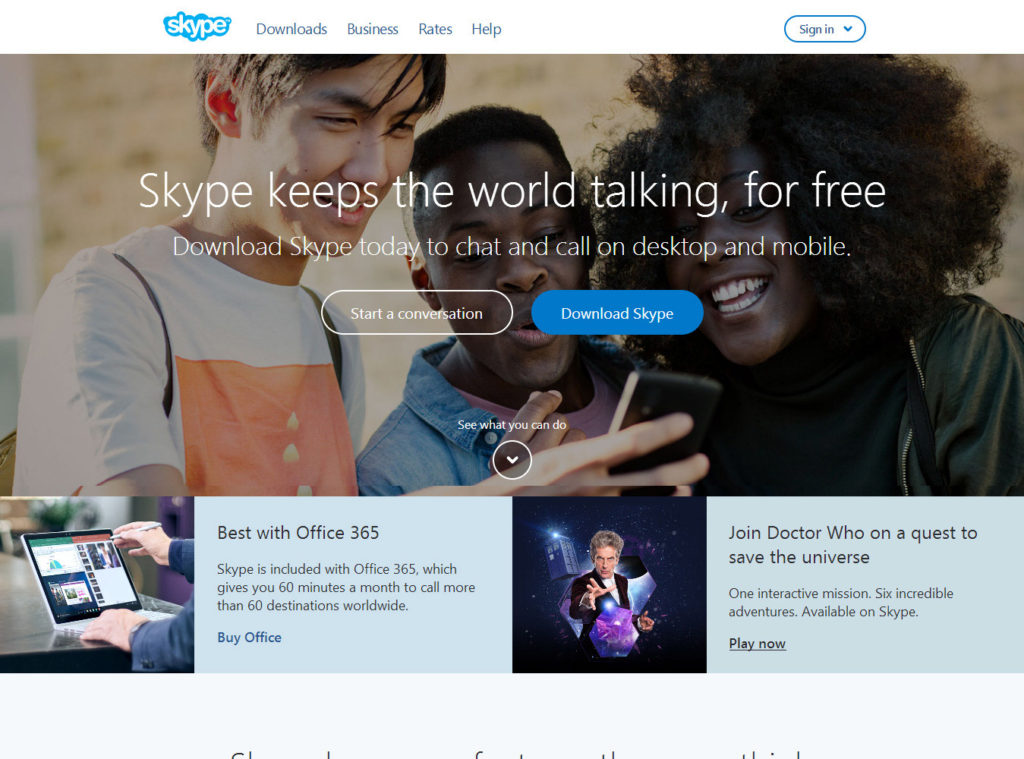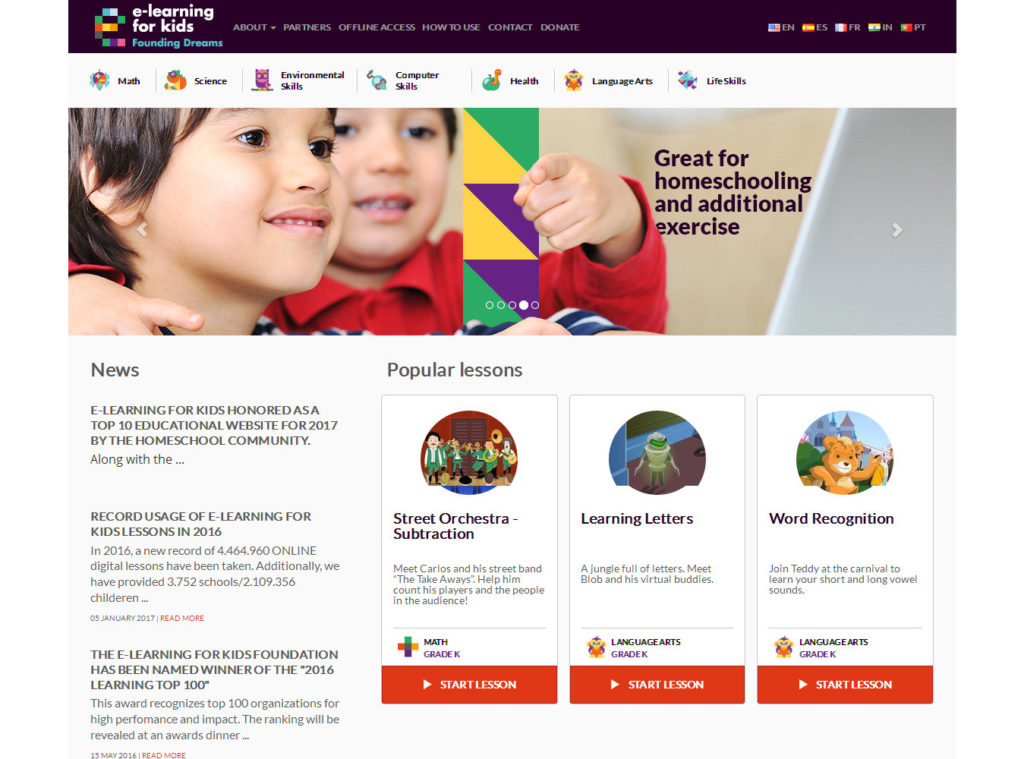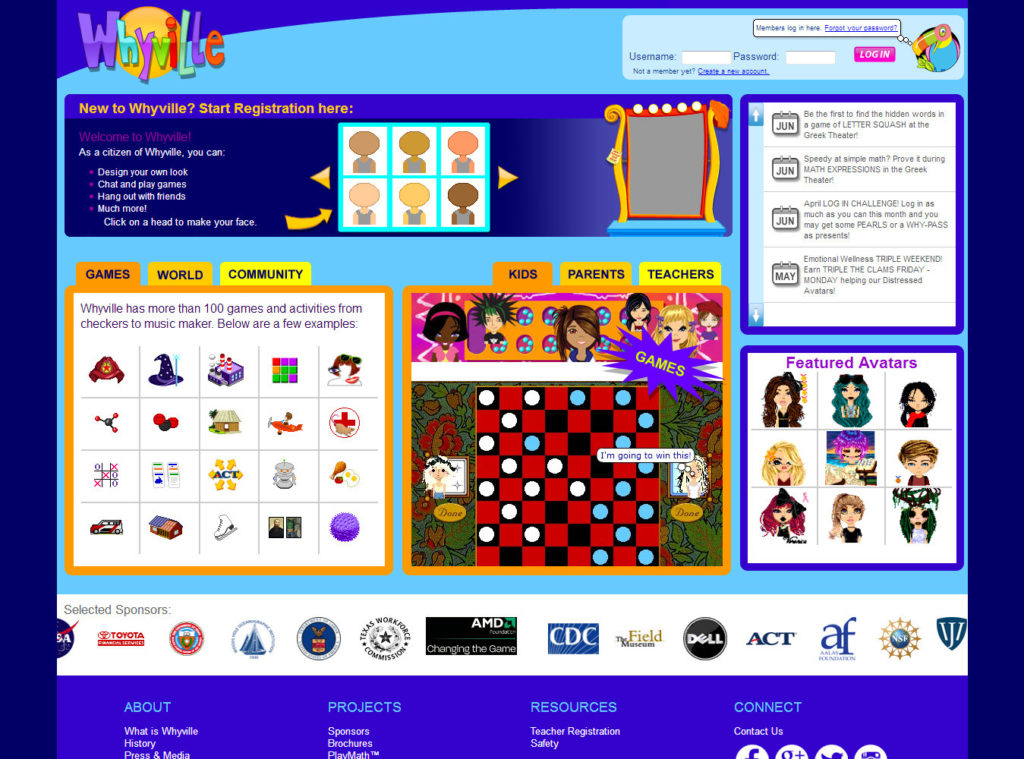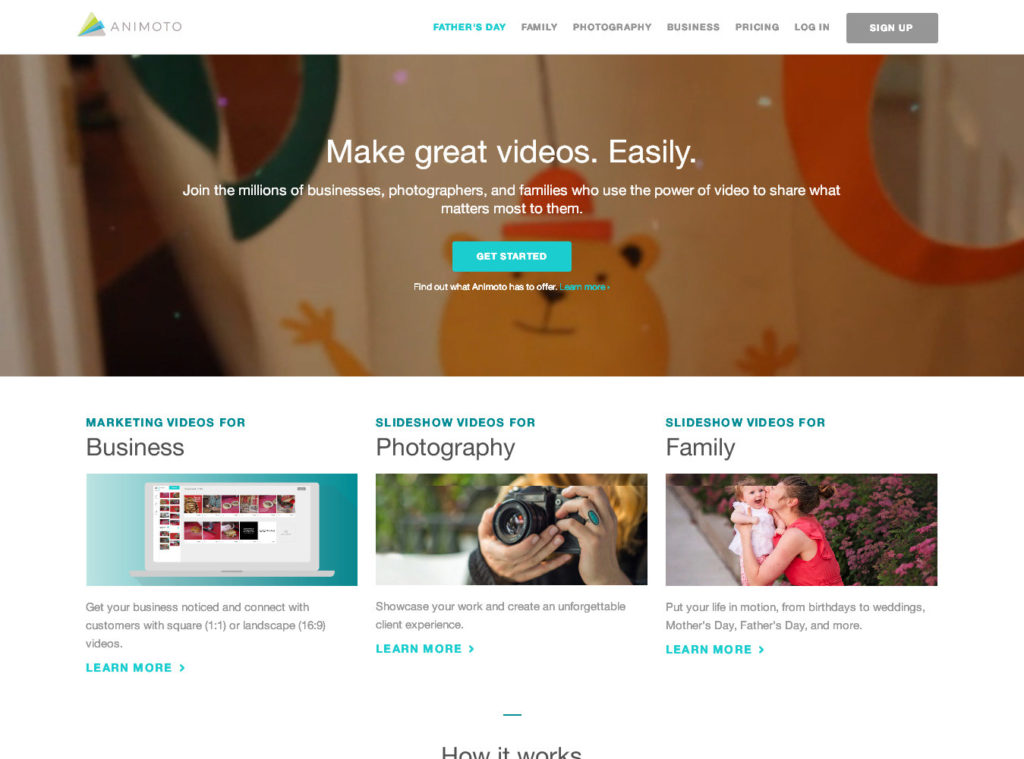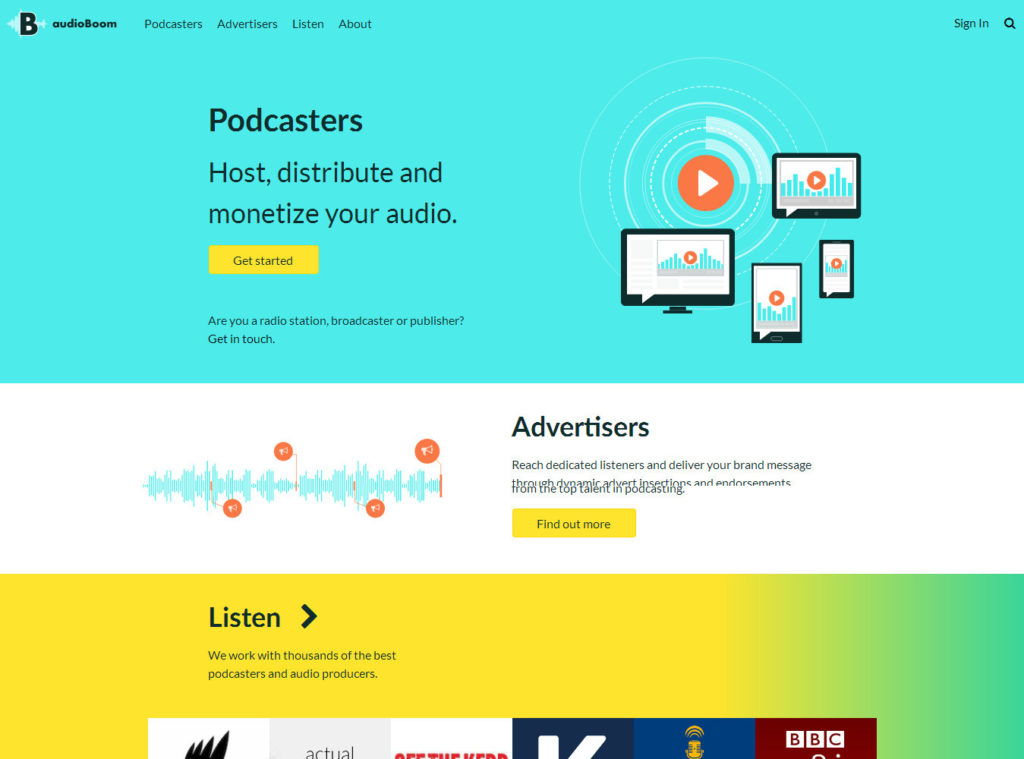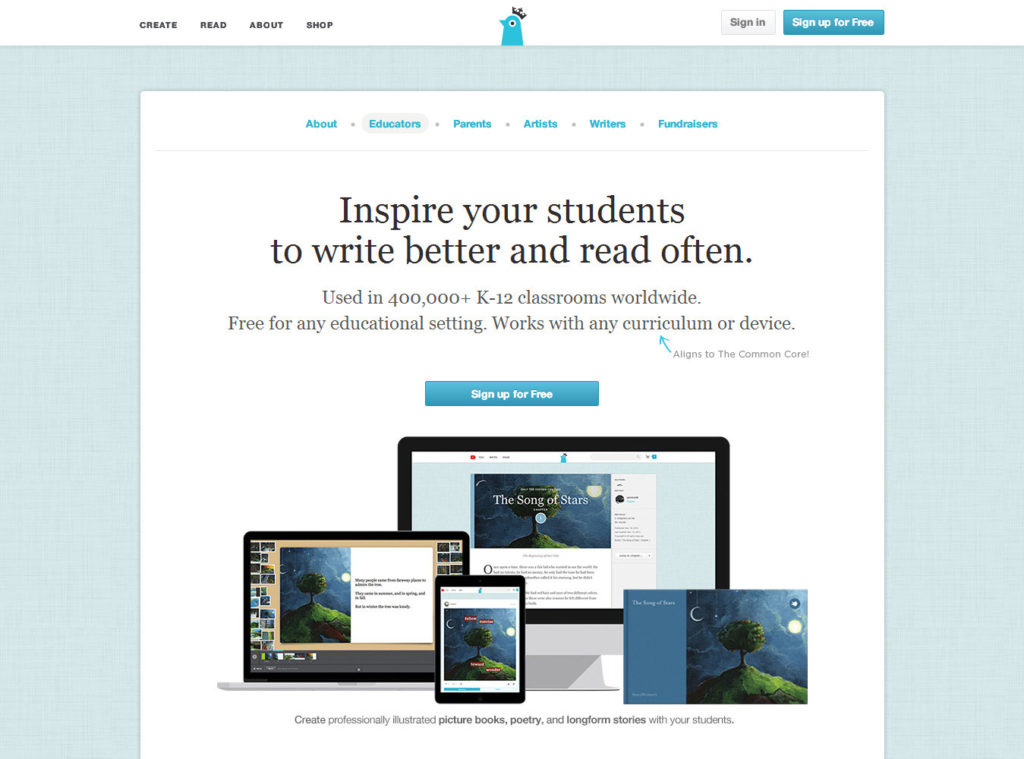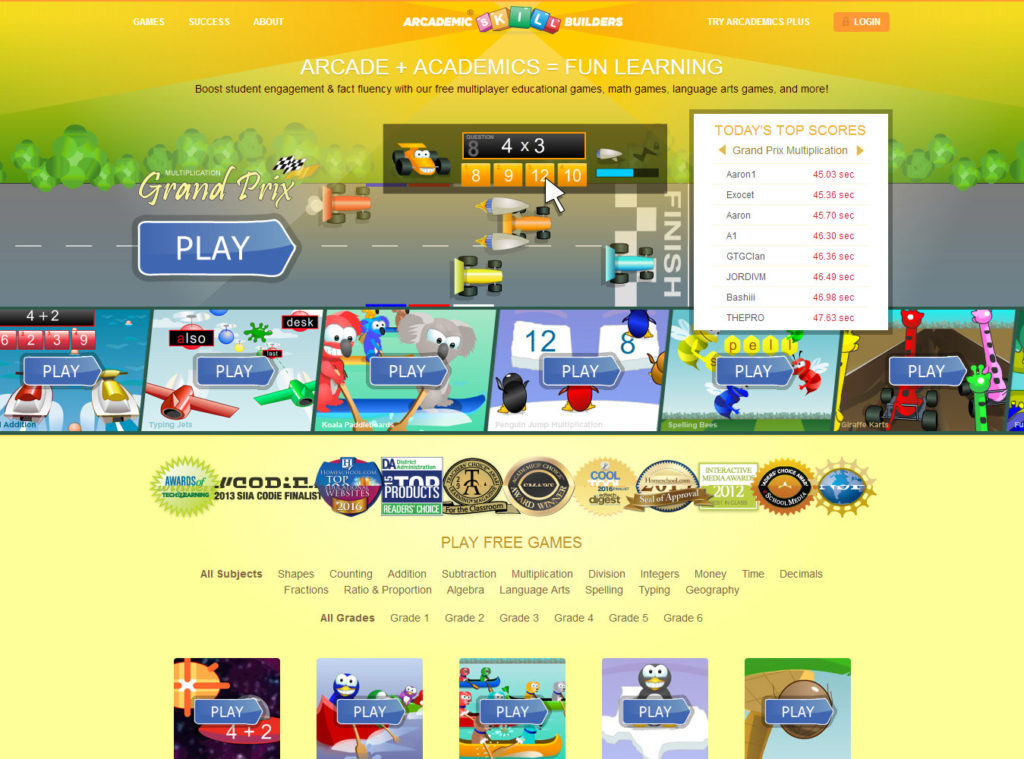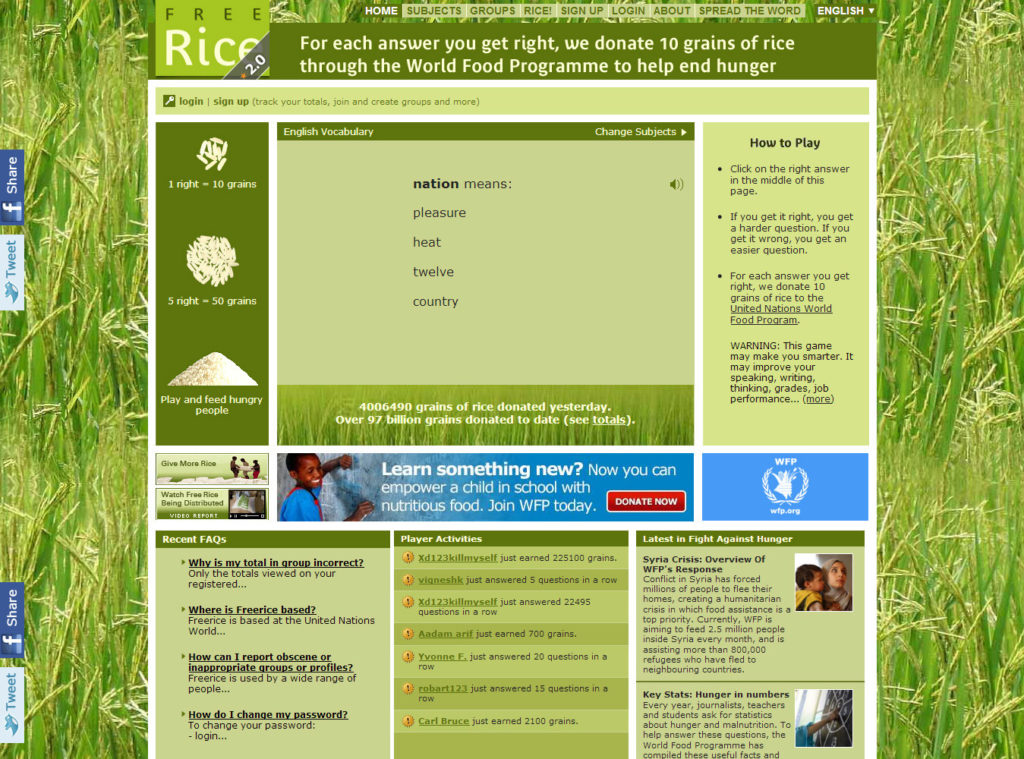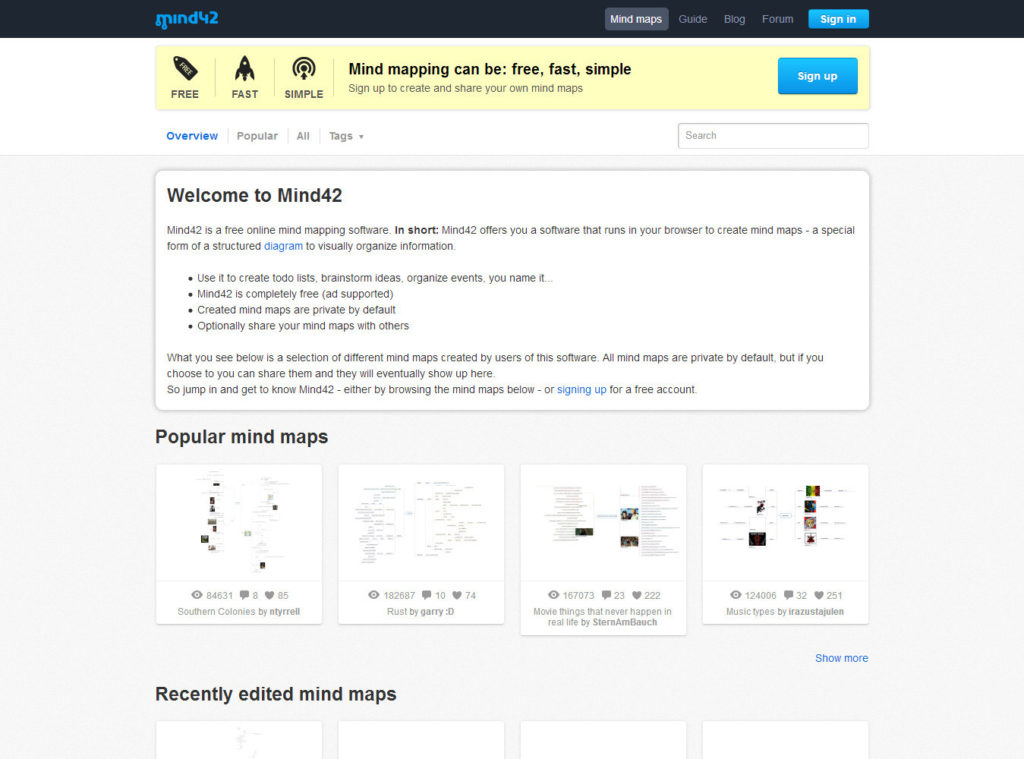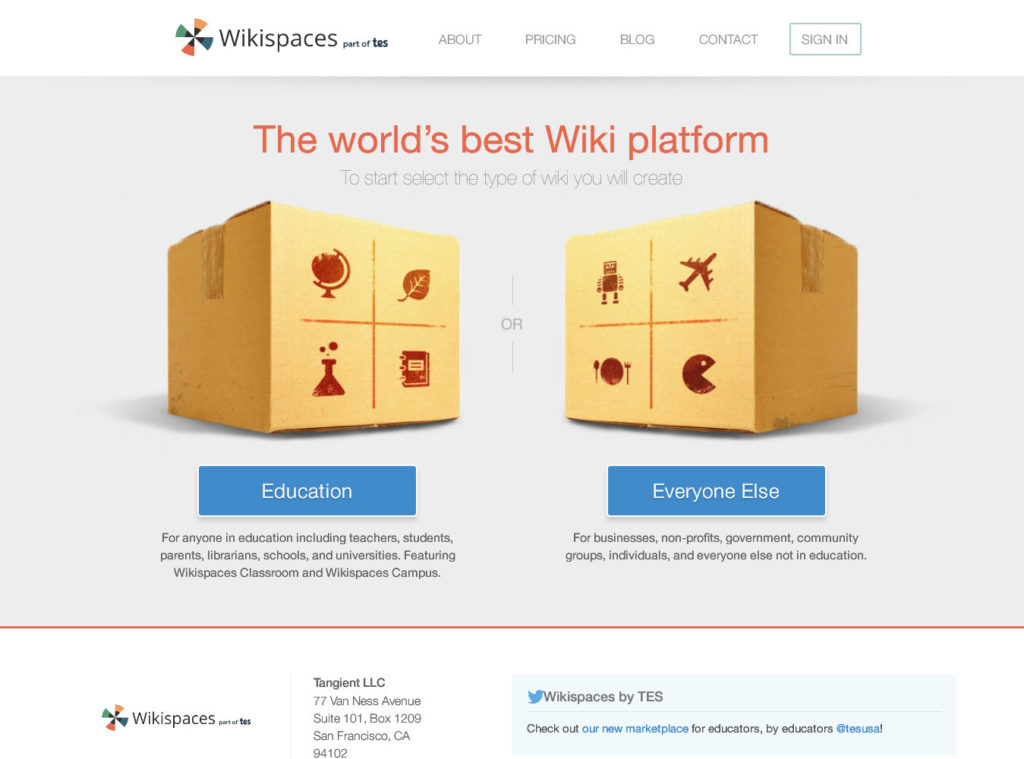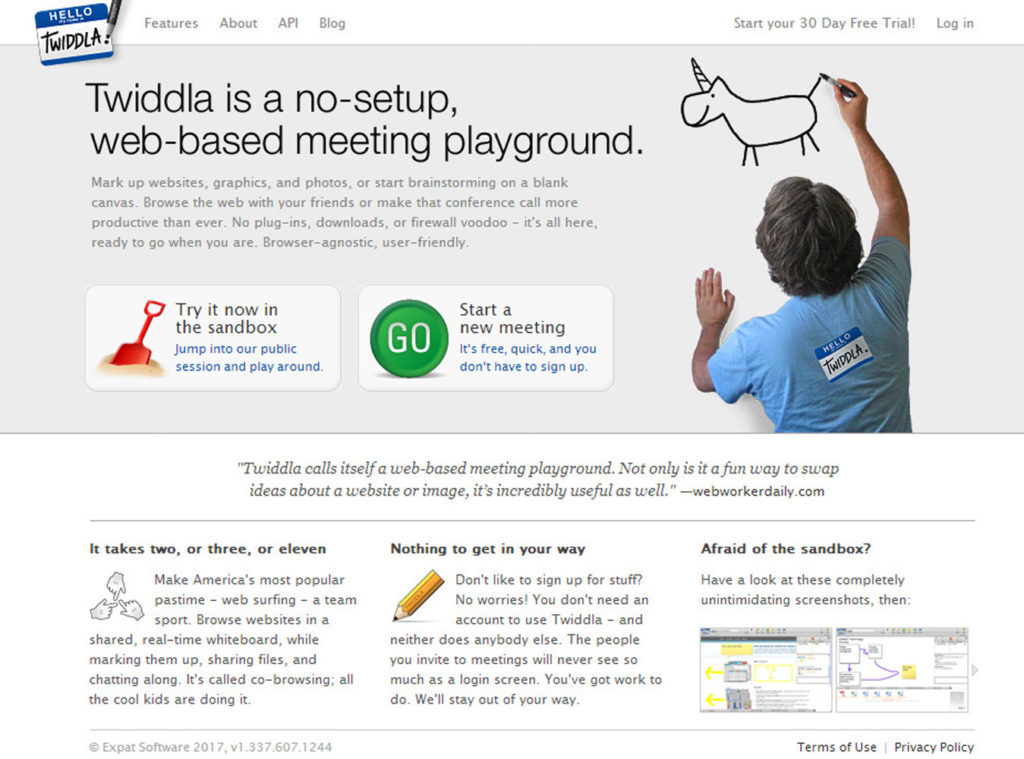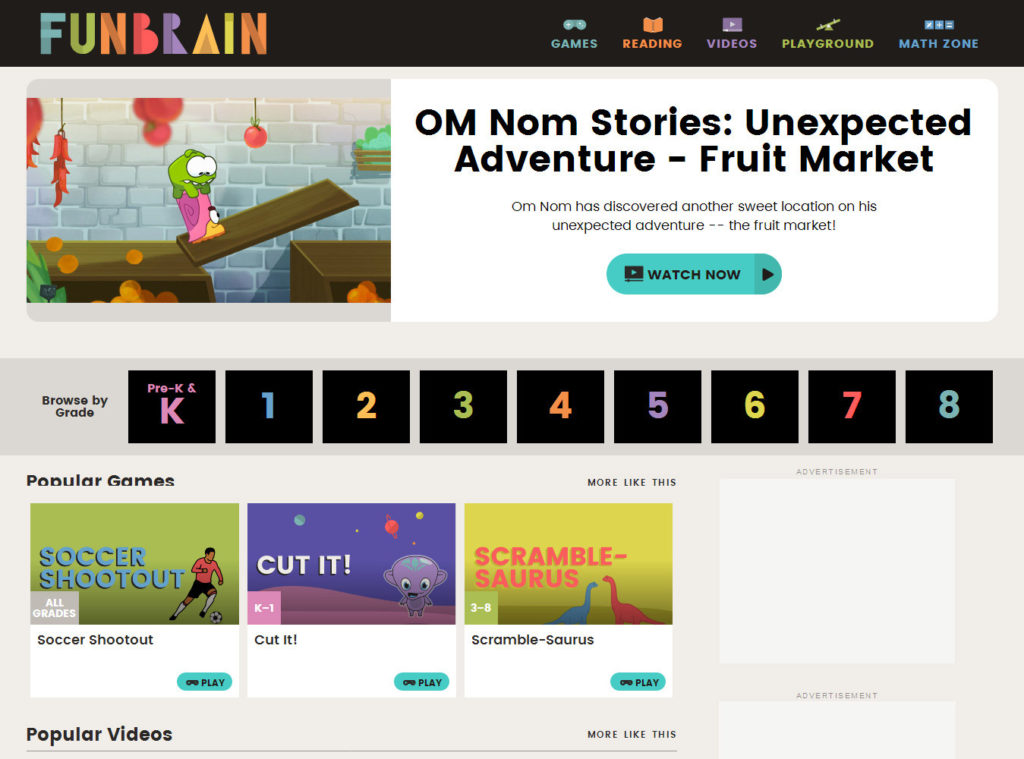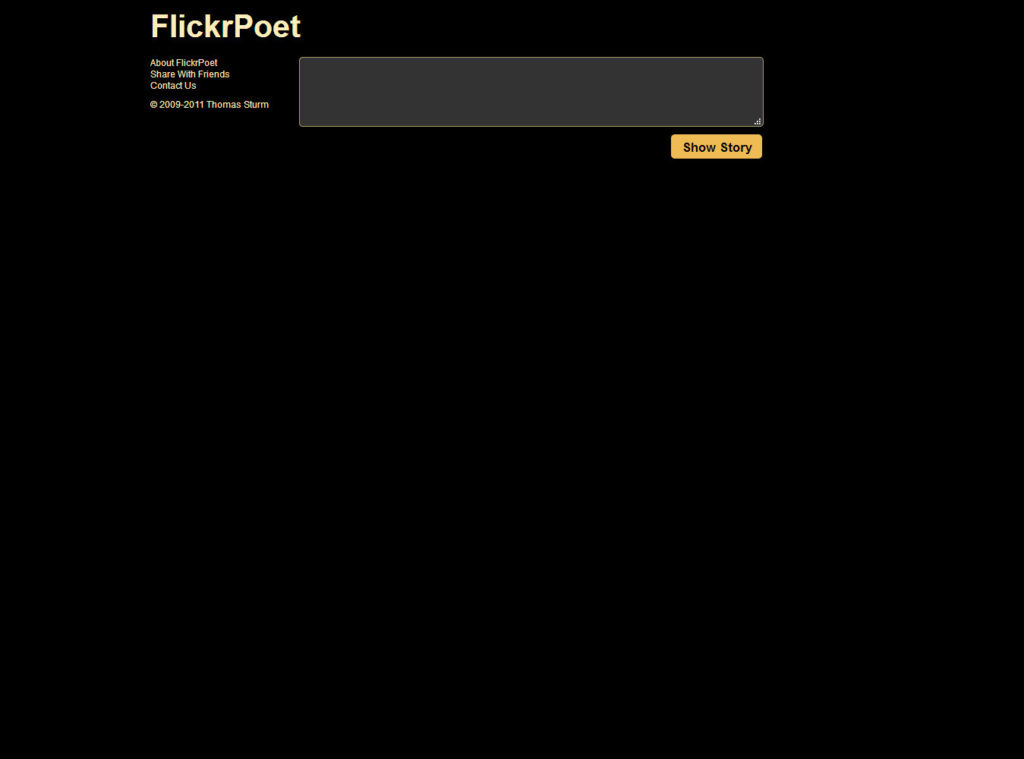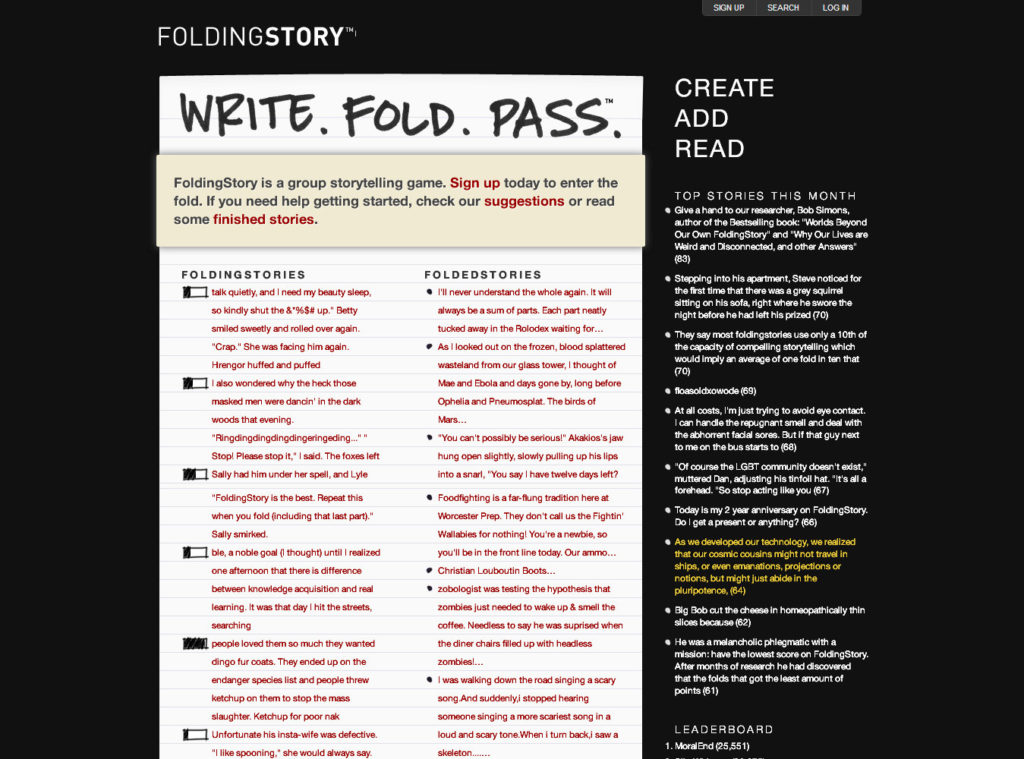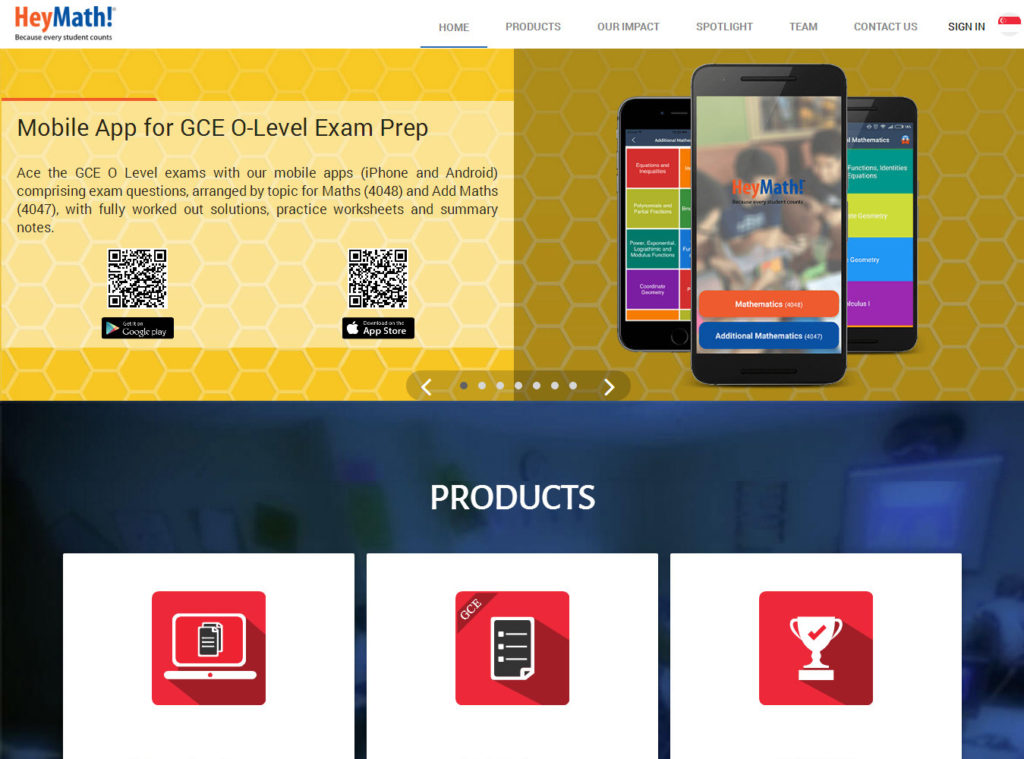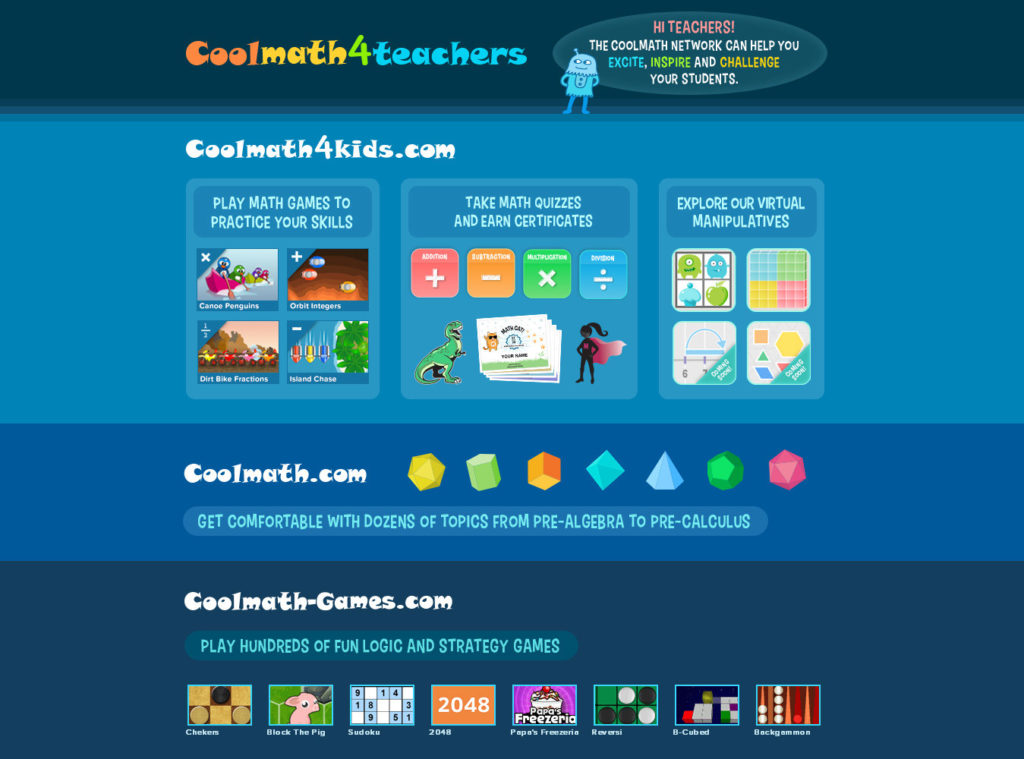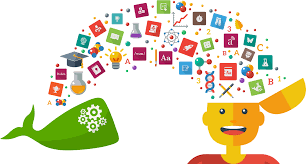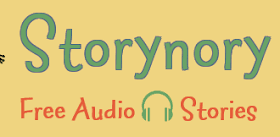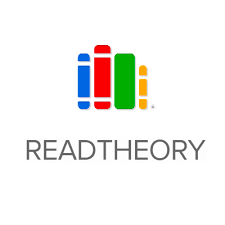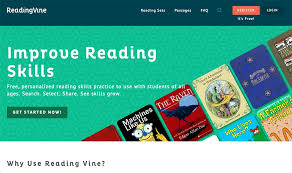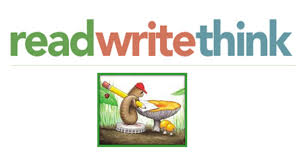What it is: Edmodo is a controlled social media platform for teachers, students, and parents. It allows teachers to assign and grade homework on their mobile devices, students to connect with educators and classmates, and parents to stay up-to-date on what their kids are doing at school.
Who would love it: Teachers, students, and parents.
Why it’s good: Teachers can use it to make the grading process easier, to assess student performance, or to complement their lesson plans. Students can engage with learning material in a variety of ways, and they can also participate in online discussions with their classmates or other learners around the world. By making classwork easily available and offering access to resources, learners, and educators around the world, Edmodo provides a comprehensive setting for the online education experience and ensures that students remain safe and focused.
What it is: Kahoot! is a user-friendly tool for designing in-class questionnaires and quizzes. A user designs a quiz, survey, or questionnaire to test the knowledge of his or her audience. Audience members can answer questions using a variety of devices. The quizzes and questionnaires, referred to as “Kahoots,” are designed to promote a game-like atmosphere in the learning environment.
Who would love it: Classroom students of all ages; also recommended for use by businesses.
Why it’s good: Kahoot! is special because it is easy to use, compatible with a variety of devices, and intended to promote a fun learning environment. Kahoot! allows teachers to get a better picture of where their students stand while students are engaged in a fun learning experience.
What it is: Schoology is a learning management system to facilitate the creation of class rosters, curricula, and calendars. It also keeps track of interactions among students and student assessment results, among other things.
Who would love it: K–12 schools, higher-education institutions, and corporations.
Why it’s good: Features include Web hosting; calendar management and the aggregation of personal, course, school, and district calendars; workload planning; personal messaging; and large-scale (system-wide) and small-scale (user) management.
What it is: Skype is an online video-calling tool that allows users across the world to communicate, for free, via the Internet.
Who would love it: Anyone anywhere with an Internet connection strong enough to support streaming video. (Given the unregulated nature of the Internet, it’s recommended for users older than 18 or with adult supervision.)
Why it’s good: Skype has been around for a long time, but it has only recently tapped its educational potential. High schools have used Skype to connect students with international speakers and educators, or to organize cross-country educational projects.
E-learning for kids is a global, nonprofit foundation dedicated to fun and free learning on the internet for children ages 5 – 12. It offers free, best-in-class courseware in math, science, reading and keyboarding; and we’re building a community for parents and educators to share innovations and insights in childhood education.
WhyVille is a free, online community where every kid is a valued citizen. Your students can play geography, science and art games with each other, or with other kids from around the world. They can even earn money (“clams”) and start their own businesses!
This incredible tool allows you to create short video clips and vibrant slideshows that will wow your students. Add music, text and other extras for full-featured presentations. The Animoto Lite version is completely free, and teachers can apply for a free Animoto Plus account.
A free account lets you make recordings up to 3 minutes each, which you can then share on your class’s wiki, blog or other media – or even as a simple link. Just imagine all the fun applications: scavenger hunts, guess-the-sound games, classroom songs and so much more!
Billed as a new literacy tool for the new generation, this collaborative storytelling site is definitely something your students will love. Work together to create artful stories to share, print and read. Your students can even play their stories like games, or send their works of art to friends and family, as books or greeting cards.
What do you get when you mix awesome arcade games with academics? Arcademics, an online gaming site where students can collaborate on multiplayer games to test their math, language, social studies and other skills.
If you’re in the market for educational gaming with a conscience, look no further than Free Rice. Challenge your students to collaborate on answering questions about geography, humanities, vocabulary, grammar, math, foreign language, literature and other subjects. Every correct answer earns 10 grains of rice dedicated to starving families in developing nations, including Bangladesh, Cambodia, Bhutan, Uganda, and Nepal.
If you’re in the market for educational gaming with a conscience, look no further than Free Rice. Challenge your students to collaborate on answering questions about geography, humanities, vocabulary, grammar, math, foreign language, literature and other subjects. Every correct answer earns 10 grains of rice dedicated to starving families in developing nations, including Bangladesh, Cambodia, Bhutan, Uganda, and Nepal.
Kids are never too young for mind maps, at least when mind maps can include photos and other images! Mind42 is a great, web-based mind-mapping tool that gets even the K-5 set engaged in idea creation. Best of all, you can open up your maps to group editing and even share your maps with parents, tutors and other classes.
Young children have brilliant minds, and what better way to light the creative spark than to get your class involved in social storytelling? Wikispaces helps you create an online home for your class’s writings, to share with parents and other students.
Take your dry erase board online with Twiddla, a virtual whiteboard app. Billed as a meeting playground with a trial sandbox, this tool seems built for the littlest learning set. And it is: draw, write, and do everything you’d do on a real whiteboard, but online, where you can also add media resources, like audio and video.
Circling back to educational games, FunBrain serves up a smorgasbord of classroom-friendly games for the K-8 crowd. Challenge your students to the Reading Arcade, play board games where math is the solution, and more.
Speaking of stories and imagery, FlickrPoet is a great tool to show your students that poetry is more than words on a page. Prose and verse take flight with FlickrPoet, which puts images to your students’ poems. Have kids work together to create several photo versions – each reload pulls new images – and discuss which best brings their words to life.
For language arts and culture classes, nothing beats group storytelling. This innovative, free site lets your students collaborate on stories you assign, or even jump on board those that are currently “folding” (being told). Be sure to filter for age-appropriate content.
For every kid who has ever struggled with math, HeyMath! offers an easy, totally fun answer. And the collaborative part? Students can ask friends and teachers for help on any question – or offer their help to solve others’ problems.
Cool Math is more than just math: it’s science, reading and geography, too! All games are designed for classroom use, and include fun activities like collaborative algebra and adventurous WebQuests.
MobyMax
Storynory – Audio Stories for Kids
FREE audio stories for kids, including fairytales, original stories, myths, poems, music, history and audiobooks all read beautifully by professional actors.
Oxford Owl
After registering for a free account, you have access to over 250 children’s audio books that can be used in the classroom. The book text is not part of the presentation, so students will not be able to follow along as it is read to them.
ReadTheory
Teachers from all around the world are using ReadTheory to help their students improve their reading comprehension skills in a fun way that keeps them attentive and motivated.
TweenTribune
TweenTribune is a free, not-for-profit online newspaper for kids, aged 8–15. It is updated daily with stories from the Associated Press that are chosen based on relevancy to pre-adolescents
Khan Academy Kids
Khan Academy Kids is a free, fun, educational program designed to inspire young children to become learners for life. The robust Khan Academy Kids curriculum and original content make learning engaging and fun for children ages two to seven

Khan Academy Reading
ELA practice exercises for 3rd -12th grade reading comprehension. Aligned to Common Core State Standards for Reading: Literature.
Lumos Learning
Lumos StepUp gives students anywhere learning and teachers the ability to monitor their online work conveniently. It helps them identify student learning challenges and develop remedial programs. Lumos Quill technology allows teachers and curriculum leads to collaboratively create interactive lessons and assessments.
K12Reader
Reading worksheets and articles for parents and teachers, covering sight words, vocabulary, reading comprehension, grammar, and other reading essentials.
ReadingVine
ReadingVine.com provides free K-12 Reading Comprehension Passages and questions for teachers and parents to use to develop a student’s literacy, fluency, and reading comprehension. All passages are printable, and can be combined into custom reading sets based on grade, topic and more.
ReadWriteThink – ReadWriteThink
Providing educators and students access to the highest quality practices and resources in reading and language arts instruction.
Exploratorium
Explore, Play, Discover: Websites, Activities, and More. Browse by Subject: Arts, Astronomy & Space Sciences, Biology, Chemistry, Data, Earth Science, Engineering & Technology, Environmental Science, History, Mathematics, Nature of Science, Perception, Physics, Social Science.
Tinkering Studio Research
The Tinkering Studio looks for ways in which learners can explore science, art, and technology by building projects, solving problems, and creating personally meaningful solutions to their own goals.
Intelligent
Intelligent.com is a free, privately-supported website that’s editorially independent. This enables us to bring you unbiased, accurate, and fact-based information on a wide range of issues.
a website dedicated to conducting data-driven research that for the last few years has served as a trusted resource for students and educational institutions across the nation.
You can see their guides here:

